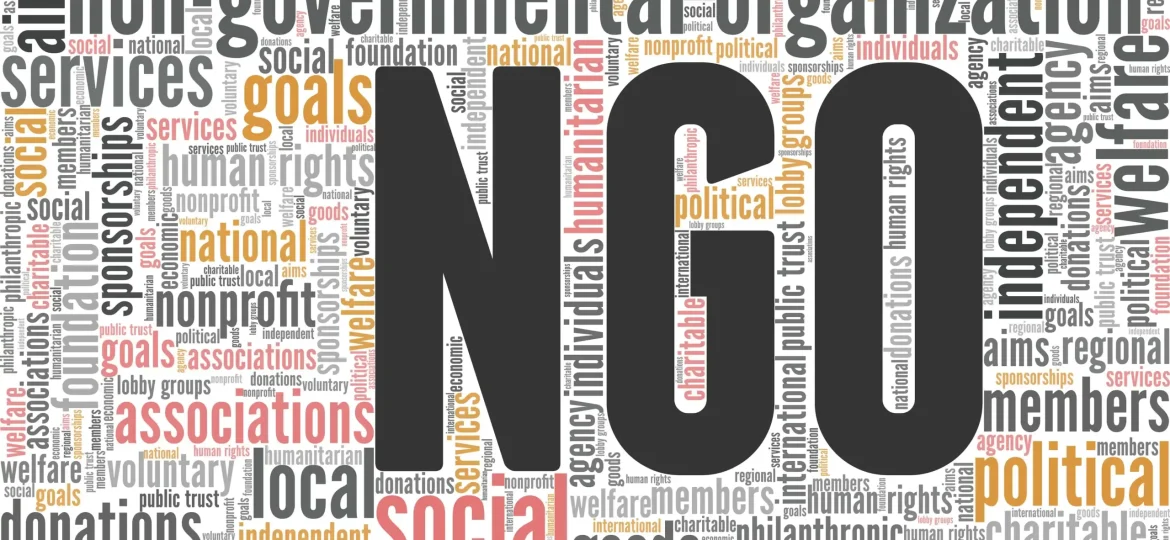
In the world of finance, the terms “bankruptcy” and “insolvency” often evoke images of struggling businesses, debt-ridden corporations, and financial turmoil. However, these challenges are not exclusive to the for-profit sector. Non-profit organizations, despite their noble missions and altruistic goals, are not immune to financial difficulties that can lead to insolvency.
The non-profit sector, encompassing charities, foundations, educational institutions, and more, plays a vital role in addressing social, cultural, and humanitarian needs. Yet, like any entity, non-profits can encounter financial hardships that threaten their ability to continue operations. Understanding bankruptcy and insolvency in the non-profit organizations is essential for safeguarding the sector’s sustainability and ensuring that its valuable contributions persist.
In the non-profit sector, bankruptcy and insolvency can result from various factors, including:
- Economic downturns
- Mismanagement of finances
- Over-reliance on a single funding source
- Unforeseen expenses or liabilities
- Lack of adequate financial planning and oversight
Recognizing the Signs of Financial Distress
Non-profit organizations often rely on a mix of funding sources, including donations, grants, and program fees, to fulfill their missions. However, shifts in the economy, changes in donor preferences, and unexpected expenses can strain even the most well-established non-profits. To protect your organization, it’s crucial to recognize the signs of financial distress:
- Declining Revenues: A noticeable drop in donations or grants may signal financial trouble. A shrinking funding base can lead to difficulties in covering operational costs and fulfilling the organization’s purpose.
- Increasing Debt: Accumulating debt, especially when used to cover ongoing expenses, can be a red flag. If debt obligations surpass available resources, it may be a sign of impending financial crisis.
- Cash Flow Issues: Regularly struggling to meet financial obligations, such as payroll or rent, indicates cash flow problems. Short-term liquidity challenges can escalate if not addressed promptly.
- Dwindling Reserves: Depleting reserves intended to provide a safety net during tough times can leave an organization vulnerable. Insufficient reserves may hinder your ability to weather financial storms.
- Program Cutbacks: Scaling back or discontinuing programs due to financial constraints can indicate that the organization is in distress and struggling to sustain its core activities.
Mitigating Bankruptcy and Insolvency
When a non-profit faces severe financial challenges, the possibility of bankruptcy or insolvency may arise. While bankruptcy for non-profits differs from the commercial sector, understanding your options and taking proactive steps can mitigate the impact:
- Assess the Situation: Conduct a comprehensive financial assessment to understand the extent of the issue. Identify the root causes of financial distress and assess the organization’s ability to recover.
- Explore Restructuring: Consider options for restructuring, which may involve renegotiating contracts, reducing expenses, or reallocating resources to prioritize core programs.
- Engage Stakeholders: Open communication with donors, board members, employees, and other stakeholders is essential. Transparency can foster support and collaboration in finding solutions.
- Seek Professional Advice: Consult legal and financial experts who specialize in non-profit insolvency. They can provide guidance on legal obligations, negotiation strategies, and potential restructuring paths.
- Examine Bankruptcy Alternatives: Explore alternatives to bankruptcy, such as informal workout agreements with creditors or seeking mediation to resolve disputes and address financial challenges.
- Legal Process for Non-Profits: As of now, bankruptcy and insolvency laws in India are primarily tailored to address the financial difficulties faced by corporate entities and individuals. These laws provide mechanisms for reorganizing or liquidating assets to settle outstanding debts. While these laws are crucial for maintaining economic stability, they may not fully align with the unique nature of non-profit organizations.
The Need for a Tailored Approach
NGOs operate with a distinct purpose that often goes beyond financial gain. They work towards serving the welfare of society, promoting education, healthcare, poverty alleviation, and more. However, financial challenges can hinder their ability to achieve these goals. A tailored bankruptcy and insolvency framework for NGOs could offer several benefits:
- Protection of Mission: A specialized framework would consider an NGO’s social mission and the potential impact of bankruptcy on the communities it serves. This protection ensures that the primary purpose of the NGO remains intact during the restructuring process.
- Revival and Rehabilitation: NGOs facing financial distress could benefit from a structured process that allows them to reorganize, renegotiate debts, and develop a sustainable plan for revival. This would enable them to continue their essential work without undue interruption.
- Creditor Confidence: A clear bankruptcy process for NGOs can enhance creditor confidence, leading to improved fundraising and investment opportunities. Creditors may be more willing to support NGOs if they know there is a legal framework to address financial challenges.
- Transparency and Accountability: A well-defined process would ensure transparency and accountability in managing the NGO’s assets during insolvency. This could help maintain public trust and donor confidence.
- Cross-Border Implications: In an increasingly globalized world, many NGOs collaborate with international partners. A bankruptcy framework could help manage cross-border implications and protect relationships with stakeholders from different jurisdictions.
Challenges and Considerations
Designing a bankruptcy and insolvency framework for NGOs comes with its challenges:
- Balancing Act: Striking the right balance between financial viability and social mission protection is essential. The framework should ensure that an NGO’s primary goals are not compromised during restructuring.
- Eligibility Criteria: Clear eligibility criteria need to be established to determine which NGOs can avail of the bankruptcy process.
- Cross-Sector Collaboration: Collaboration between legal experts, government bodies, NGOs, and other stakeholders is crucial for developing a comprehensive and effective framework.
- Cross-Border Complexities: NGOs often have international ties. The framework should address the complexities that may arise due to cross-border collaborations.
Prevention is Key
While addressing financial distress is essential, prevention remains the most effective strategy. To protect your non-profit organization from bankruptcy and insolvency:
- Diversify Funding Sources: Relying on a single source of funding can make your organization vulnerable. Diversify your funding streams to reduce dependence on a specific donor or grant.
- Build Reserves: Maintain a healthy reserve fund to serve as a financial cushion during challenging times. Regularly assess and adjust reserve goals based on the organization’s needs and operating environment.
- Financial Sustainability: Develop a sustainable financial model that aligns with your mission. Implement effective budgeting, expense management, and revenue-generation strategies.
- Scenario Planning: Anticipate potential financial challenges and create contingency plans. Establishing protocols for handling crises can help minimize disruptions.
- Governance and Oversight: Cultivate a strong board of directors with diverse expertise. Ensure effective oversight, risk management, and financial controls.
Conclusion
Non-profit organizations play a vital role in shaping societies and improving lives. By proactively addressing financial challenges and understanding bankruptcy and insolvency, non-profits can continue to fulfill their missions, make a positive impact, and contribute to a better world.

